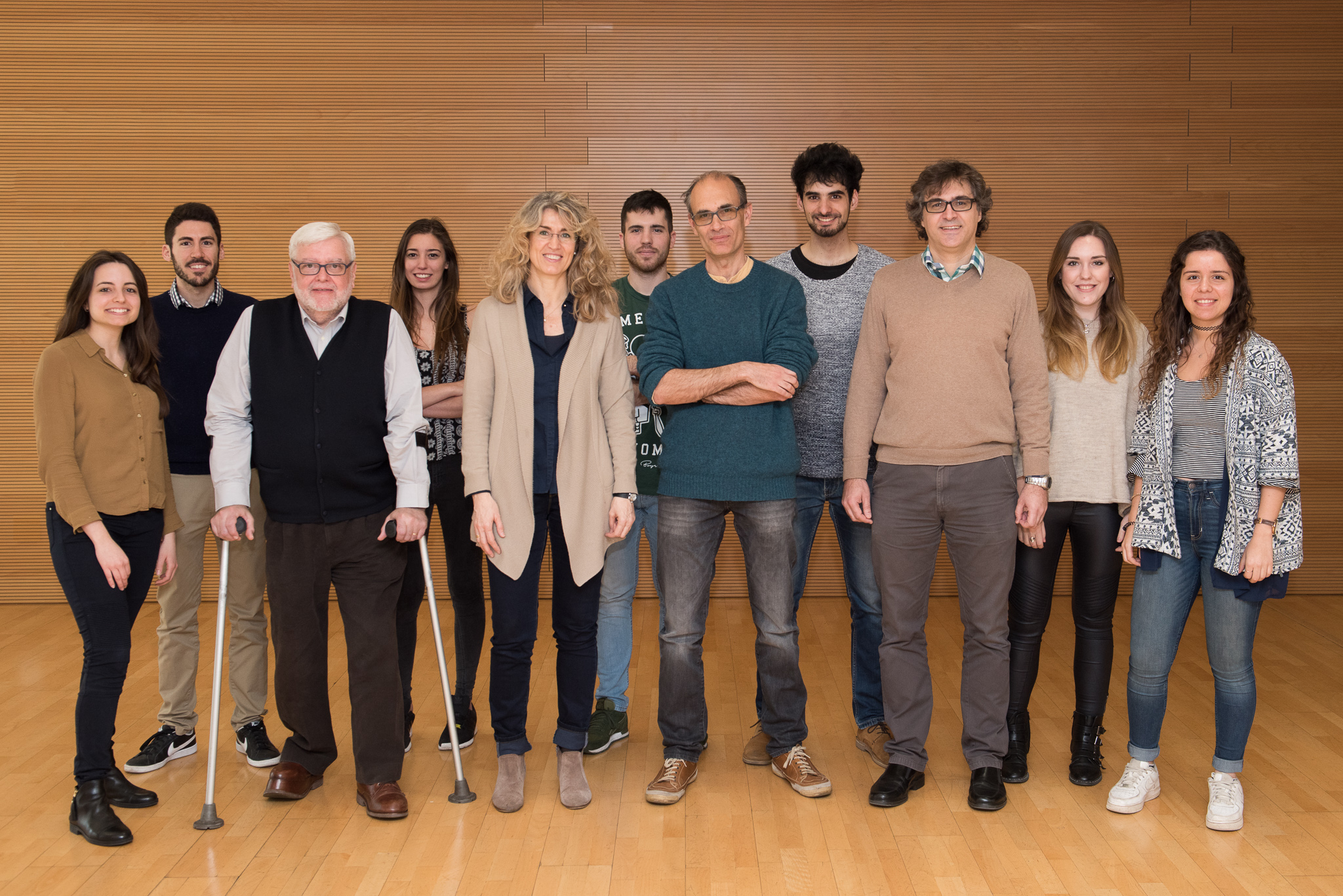
JOSEP SAURA
Position: Professor agregat
Contact details
Dr. Josep Saura
Department of Biomedicine
Faculty of Medicine, Casanova 143
08036 Barcelona (Spain)
+3493 4021920
josepsaura (at) ub.edu
Research Interests
Neuroinflammation (also known as glial activation) is the inflammatory process that takes place in the CNS in response to stimuli such as neuronal damage, pathogens or abnormal deposits. Two cell types, astrocytes and microglia, play key roles in this response. The neuroinflammatory response has been evolutionary selected to reestablish homeostasis by giving trophic support to damaged cells, or by eliminating pathogens, infected cells and cell debris. However, some elements of this response are potentially toxic and therefore neuroinflammation can be detrimental to healthy cells if it gets out of control and/or it becomes chronic.
Our group is focused on the study of neuroinflammation under the hypothesis that drugs that could attenuate the neurotoxic effects of chronic or exacerbated neuroinflammatory responses could be potential treatments in a variety of neurological disorders including Alzheimer’s and Parkinson’s disease, multiple sclerosis or amyotrophic lateral sclerosis.
Research Tools
Our group has ample experience in the in vitro study of neuroinflammation. We have described novel methods for primary glial cultures and co-cultures. We have also ample experience in vivo including various protocols of stereotaxic injection (hippocampal, nigral, striatal, spinal cord). We have experience with rodent models of Alzheimer’s and Parkinson’s disease, ALS, MS and prion disease.
Our main scientific interests are:
- the study of transcription factors regulating proinflammatory gene expression in microglial activation. We have described the expression and function of three transcription factors of the C/EBP family in neuroinflammation. Our data show that C/EBPβ and C/EBPδ are expressed by activated microglia in vitro, in vivo and in human neurological disease and that genetic deletion of C/EBPβ and C/EBPδ results in an attenuated microglial activation and in clinical improvement in animal models.
- the study of microglial-neuron cross-talk molecules, particularly the CD200-CD200R pair. This research line is the result of a years-long collaboration with the Cellular Neurobiology group leaded by Dr Carme Solà at IIBB (CSIC).
Current Research Lines
- Microglia
- Neuroinflammation
- Neurodegeneration
- Transcription factors
Technologies / methods
In vitro
- Mouse microglial, astroglial, mixed glial, neuronal primary cultures
- Neuron-microglial co-cultures
- Microglial-like cells derived from adult human monocytes
- BV2 cells
In vivo
- Stereotaxic injection
- EAE
- Systemic LPS
- Various transgenic models
Other
- Ex-vivo isolation of microglia from adult CNS
Highlighted publications
· Pulido-Salgado M, Vidal-Taboada JM, Garcia Diaz-Barriga G, Serratosa J, Valente T, Castillo P, Matalonga J, Straccia M, Canals JM, Valledor AF, Solà C, Saura J (2017) Myeloid C/EBPβ deficiency reshapes microglial gene expression and is protective in experimental autoimmune encephalomyelitis. J Neuroinflammation 14; 54.
· Pulido-Salgado M, Vidal-Taboada JM, Saura J (2015) C/EBPβ and C/EBPδ transcription factors: Basic biology and roles in the CNS. Prog Neurobiol 132; 1-33.
· Straccia M, Dentesano G, Valente T, Pulido-Salgado M, Sola C, Saura J (2013) CCAAT/Enhancer Binding Protein β Regulates Prostaglandin E Synthase Expression and Prostaglandin E 2 Production in Activated Microglial Cells. GLIA 61; 1607-19.
· Valente T, Straccia M, Gresa-Arribas N, Dentesano G, Tusell JM, Serratosa J, Mancera P, Sola C, Saura J (2013) CCAAT/enhancer binding protein δ regulates glial proinflammatory gene expression. Neurobiol Aging 34; 2110-24.
· Valente T, Mancera P, Tusell JM, Serratosa J, Saura J (2012) C/EBPβ expression in activated microglia in amyotrophic lateral sclerosis. Neurobiol Aging 33; 2186-99.


